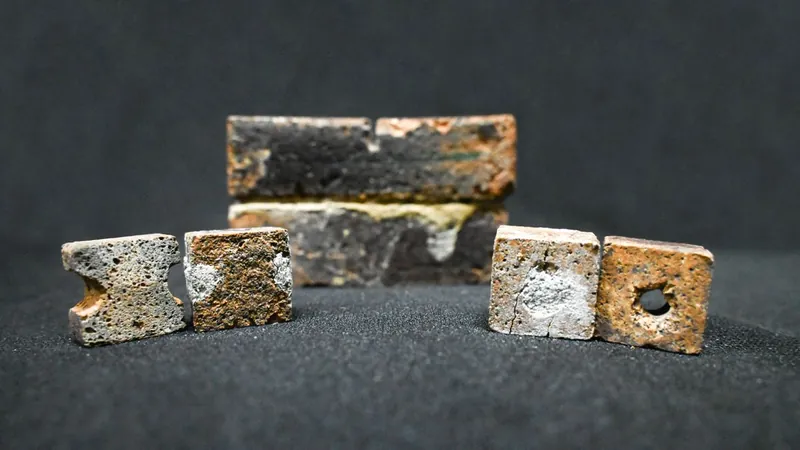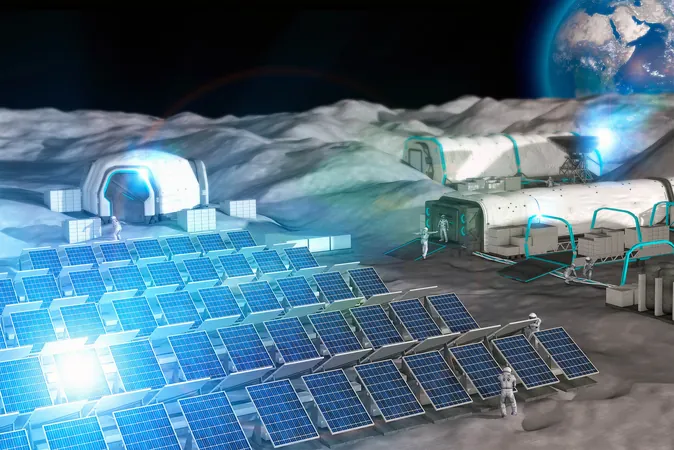
Could Bacteria Be the Key to Building Resilient Moon Bases? Discover How!
2025-04-06
Author: John Tan
As humanity sets its sights on the moon for future exploration and habitation, innovative solutions are emerging to address the daunting challenges involved in constructing sustainable outposts. A groundbreaking study reveals the potential role of bacteria in strengthening bricks made from lunar regolith, paving the way for resilient lunar architecture.
Challenges of Building on the Moon
Building on the lunar surface presents a unique set of challenges. The moon’s extreme environment—ranging from scorching heat of 250 degrees Fahrenheit (121 degrees Celsius) to the bone-chilling cold of -208 degrees Fahrenheit (-133 degrees Celsius)—demands materials that can withstand harsh conditions. A notable strategy involves using locally sourced lunar regolith, or the dust and debris scattered across the moon's surface, to construct bricks, thereby minimizing transportation costs from Earth.
Innovative Uses of Bacteria
Researchers at the Indian Institute of Science (IISc) have taken significant steps in using terrestrial bacteria, specifically Sporosarcina pasteurii, to enhance the integrity of these moon-dust bricks. This ingenious approach harnesses the bacteria’s ability to convert urea—which is produced as waste—into calcium carbonate crystals, which act as a binding agent when mixed with regolith and guar gum, a natural polymer derived from guar beans.
Repairing Lunar Bricks
However, the team did not stop there. While earlier experiments focused on using these bacteria to make bricks directly, they decided to investigate their potential applications in repairing bricks that might crack under lunar conditions. Using a combination of regolith, guar gum, and Sporosarcina pasteurii, they created a slurry that could effectively fill cracks or holes created by the extreme lunar climate and potential micrometeorite strikes.
Testing and Results
Through rigorous testing, including the deliberate infliction of various types of damage to bricks made from regolith simulant, the researchers discovered that this bacterial slurry could regrow the bricks’ strength by reclaiming 28% to 54% of their previous compressive strength. Though the bricks did not fully regain their original potency, the restoration found through bacterial intervention could be crucial for the longevity of lunar structures.
Future Research and Space Exploration
However, there are still many mysteries to solve. The behavior of Sporosarcina pasteurii in microgravity and exposure to cosmic radiation remains uncertain. The IISc team is keen on addressing these questions and plans to send samples of the bacteria into space as part of India’s Gaganyaan mission, which aims to launch its first crewed spacecraft by 2026.
Conclusion
Imagine standing on the lunar surface, looking at impressive bases constructed with local materials, reinforced by advanced biotechnology. If the bacteria can function in extraterrestrial conditions, the implications for space exploration are staggering, and this could be the first step towards building sustainable habitats across the solar system.
As scientists continue to innovate and explore, the dream of a human presence on the moon is inching closer to reality—one bacterial brick at a time!



 Brasil (PT)
Brasil (PT)
 Canada (EN)
Canada (EN)
 Chile (ES)
Chile (ES)
 Česko (CS)
Česko (CS)
 대한민국 (KO)
대한민국 (KO)
 España (ES)
España (ES)
 France (FR)
France (FR)
 Hong Kong (EN)
Hong Kong (EN)
 Italia (IT)
Italia (IT)
 日本 (JA)
日本 (JA)
 Magyarország (HU)
Magyarország (HU)
 Norge (NO)
Norge (NO)
 Polska (PL)
Polska (PL)
 Schweiz (DE)
Schweiz (DE)
 Singapore (EN)
Singapore (EN)
 Sverige (SV)
Sverige (SV)
 Suomi (FI)
Suomi (FI)
 Türkiye (TR)
Türkiye (TR)
 الإمارات العربية المتحدة (AR)
الإمارات العربية المتحدة (AR)